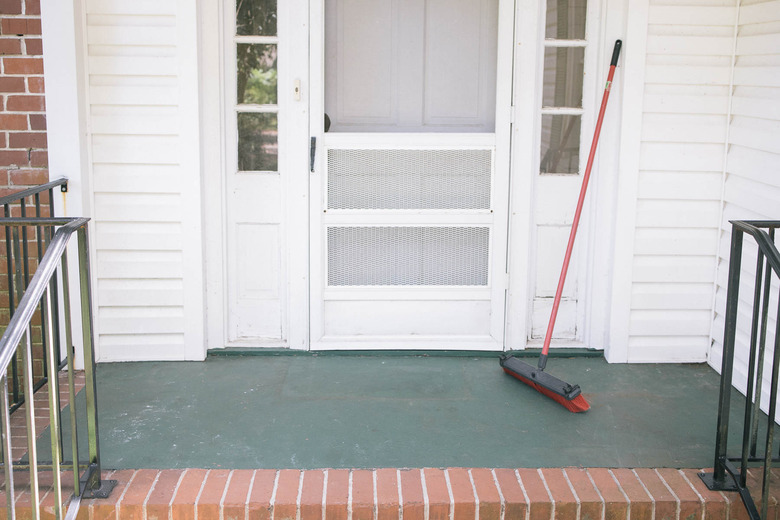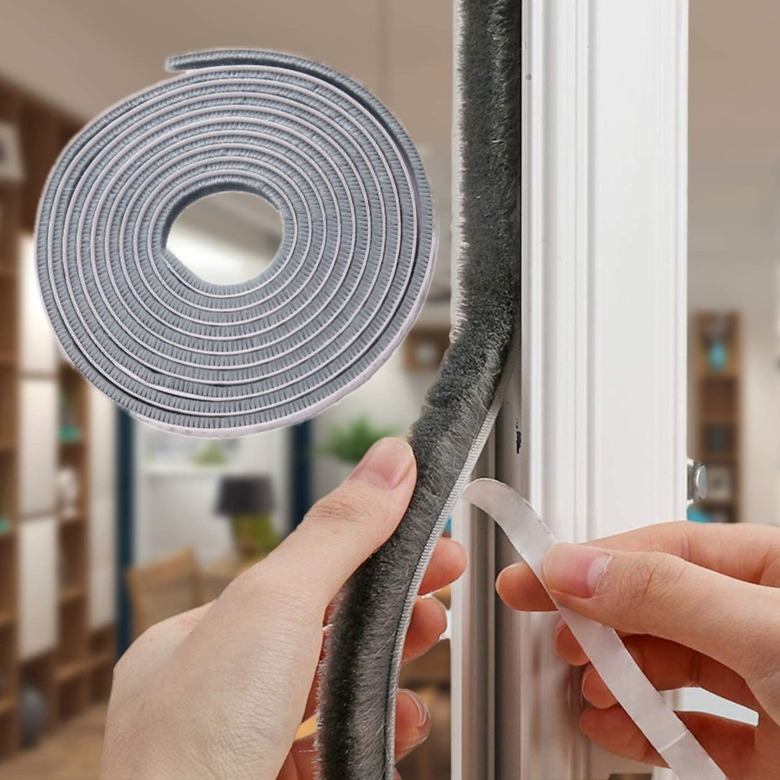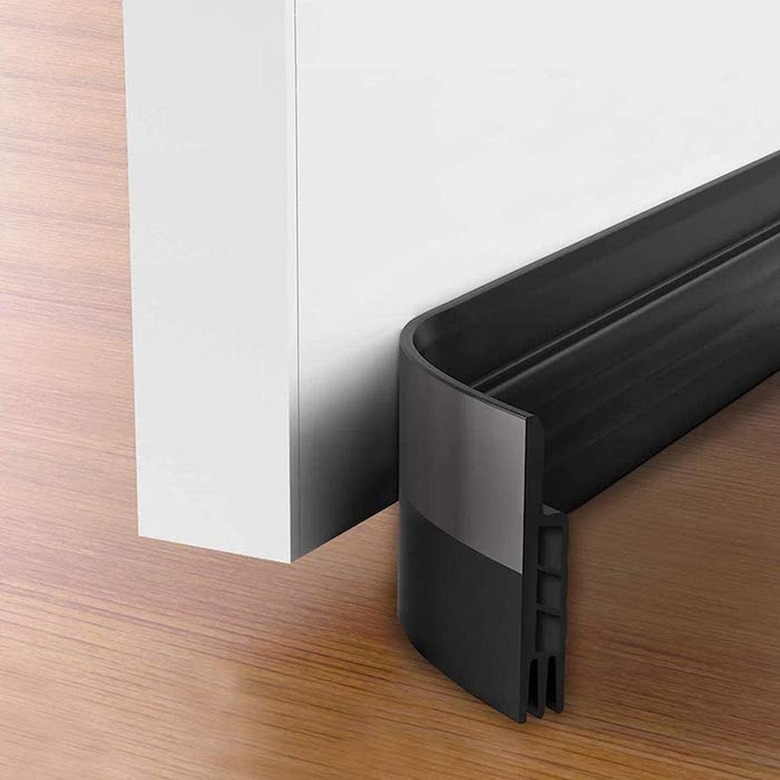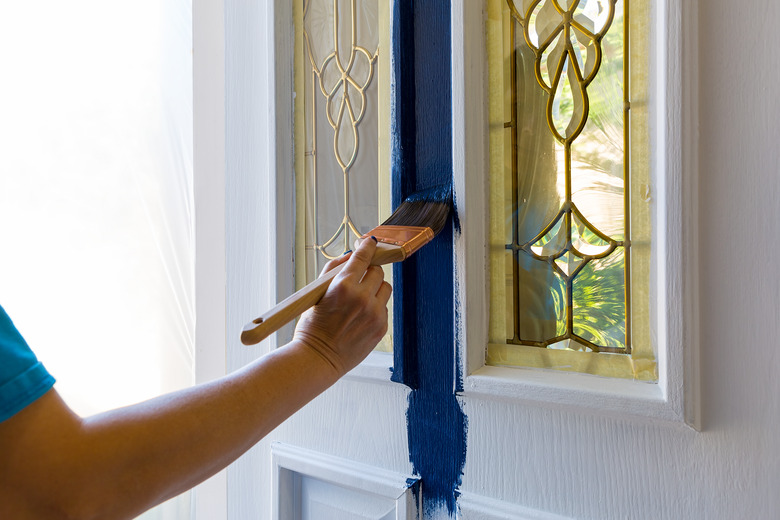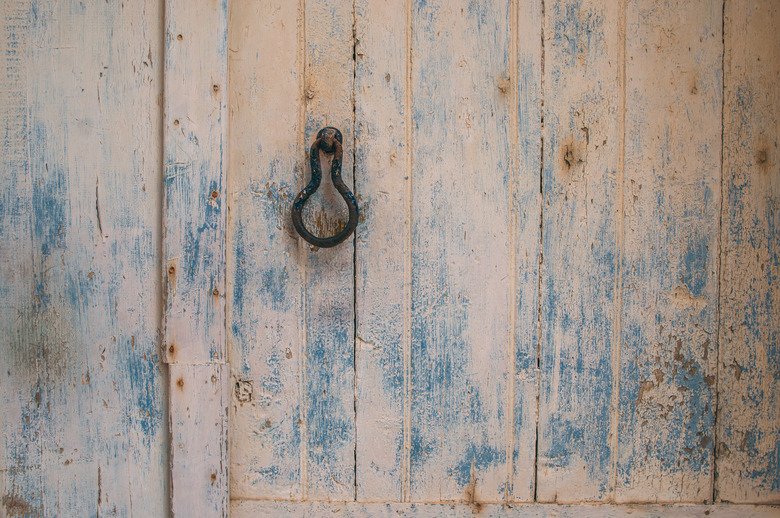Yes, You Need To Maintain Your Front Door. Here's How
We may receive a commission on purchases made from links.
Even though you use your front door every day, door maintenance is probably one of the last things you think about when compiling a list of home improvement tasks. However, maintaining entry doors is important to extending their longevity, sustaining their energy efficiency, and keeping up their curb appeal, especially when it comes to exterior wood doors.
Exactly what needs to be done to maintain your door will vary based on the material from which it is made, since wood doors tend to require more maintenance than metal and fiberglass doors. At the most basic level, though, an annual maintenance routine should involve cleaning your door and inspecting it for potential problems.
1. Clean your entryway door.
1. Clean your entryway door.
Your front door has a major impact on the first impression someone has of your home, and keeping it clean makes your home's exterior seem neat and tidy. On top of this, dirt and debris buildup can reduce your door's durability. When you start seeing signs of dirt, debris, or water stains, it's time to clean your door. Clean both the inside and outside of your exterior doors at least twice a year, but if you have wrought iron doors or live in a coastal area with high salt and moisture levels, you should clean them at least once a month.
Here's how to clean your front door:
- Remove debris, like crushed leaves, mud, or spider
webs with a dry rag or soft, dry brush. - Next, clean one part of your door at a
time. For most door materials and for the hardware, you should use a solution
of diluted dish soap or baby shampoo mixed with warm water, but wrought iron
doors require a vegetable-based soap, like Castile soap or Murphy oil soap. - Remove any remaining soap residue with a clean, damp cloth or
sponge and then dry with a low-lint cloth. - For windows, use a standard glass
cleaner or a vinegar and water solution, taking care to wipe away the liquid before it drips on the rest of the door.
Tip
Never use a power washer or garden hose to clean your door, or water may enter your home interior along the edges of the door. Do not use abrasive cleaners or scrubbers or you might damage the door's finish or paint. Don't forget to clean the door jamb and trim as well since you don't want a clean door surrounded by a dirty, dingy door frame.
2. Inspect your door.
2. Inspect your door.
While you're cleaning your door, look it over for signs of damage or weathering. Be sure to inspect all six sides of the door, and pay special attention to the finish and look for peeling, chips, fading, and cracks, any of which are unattractive but also indicate that the finish is no longer protected. Also, take time to inspect the hardware, weatherstripping, door sweeps, glass panels, trim, and door frame as well.
If glass panes are loose, rattling, broken, or have moisture trapped between the panels, call a contractor to replace them. When your door isn't opening smoothly or if it makes creaking sounds, apply spray lubricant to the hinges.
It may be time to consider a new door if you notice it is cracked, warped, rusted, or dented in multiple places as well as if it has insect or water damage. Fortunately, most other issues can be repaired when caught early enough.
3. Replace damaged weatherstripping.
3. Replace damaged weatherstripping.
While front doors can last decades, particularly steel doors, weatherstripping lasts only around one to five years. Weatherstripping that is ripped, torn, or discolored is unattractive and makes a door drafty.
Weatherstripping comes in many different types and materials, from classic spring-type metal to rubber gaskets in various shapes to cheap and basic self-adhesive foam tape. It's usually best to replace old weatherstripping with a matching product, especially if it's the original weatherstripping from the manufacturer, as this will be compatible with the door and frame design. If you can't find the same thing in a new product, you can use whatever fits and seals the door well without causing binding.
4. Change damaged door sweeps.
4. Change damaged door sweeps.
Similarly, if your door sweep is damaged and missing pieces or gaps, it should be replaced. If the door sweep is screwed onto the side of the door, this can easily be done without removing the door, as it just requires cutting the door sweep to the right size and then screwing it to your door. Door sweeps secured to the bottom of the door require taking the door off the hinges in order to access the fasteners attached to the bottom of the door.
The alternative to a door sweep is a rubber strip or tube fitted into the door threshold or in a separate metal channel that is screwed to the threshold. You can buy replacement strips, and the new one must fit just like the old one to ensure a good seal without impeding the door motion. If your strip has its own channel, it may be easier to replace both the channel and the strip (sold together) than to find just the right strip to fit the old channel.
5. Refinish your door.
5. Refinish your door.
How often you'll need to refinish your door will depend largely on the weather in your area and how protected your door is from the weather. Doors hit by bright, direct sun or sleet and snow suffer more damage than those less exposed to the elements, and darker colors typically fade sooner than light shades. For best results, always paint or stain and seal all six sides of the door as well as the trim and door jamb to protect your entire door.
How to refinish the door will vary based on the material. Metal and fiberglass doors simply need to be sanded, primed, and repainted with at least two coats of paint appropriate for the material. For metal doors, look for an appropriate type of rust-resistant paint. For fiberglass doors, avoid oil paints because they can harm the door.
Stained wood doors require a lot more work to refinish since you first need to strip off the old finish with a chemical stripper, sand the door, apply stain, and seal the door with three coats of varnish. Look for a varnish with an ultraviolet inhibitor to protect your door from the harsh glare of the sun, as it can keep the color vibrant for as long as possible. Alternatively, you can use an alkyd-based oil paint after sanding the door if you prefer a solid color over the natural wood. This kind of paint will provide the best protection against the elements, but it is a little harder to work with than water-based paints.
6. Repair hairline cracks.
6. Repair hairline cracks.
While a door with large cracks needs to be replaced or professionally restored, sometimes wood doors develop hairline cracks due to the nature of these doors expanding and contracting based on the weather. These can be easily filled with wood putty or filler, which are readily available at home improvement stores. Once the cracks have been filled, be sure to inspect the repair every year because wood filler and putties do not last more than a few years, so the procedure will need to be repeated periodically. If you're refinishing the door, fill the cracks before applying the protective varnish or paint.
References
- BuildDirect: Care and Maintenance Tips for Exterior Doors
- Exterior Medics: Maintenance Tips for Your Exterior and Entry Doors
- Door & More: How To Make Your Exterior Wood Door Last Longer
- The Front Door Company: Yes, You Do Need to Clean and Maintain Your Front Door
- Thompson Creek: Can You Paint a Fiberglass Door?

